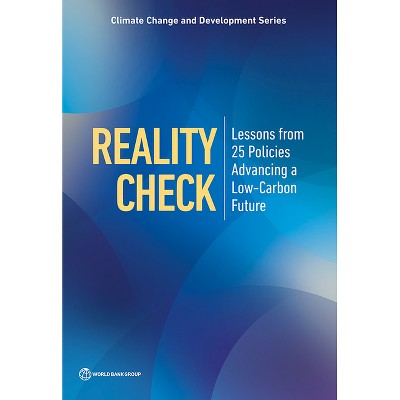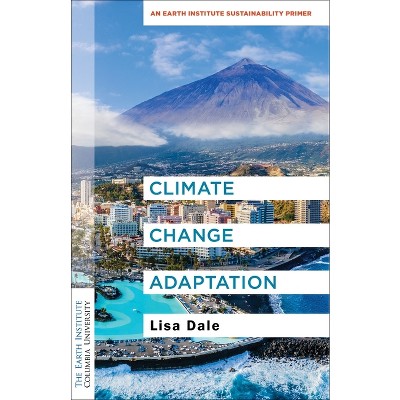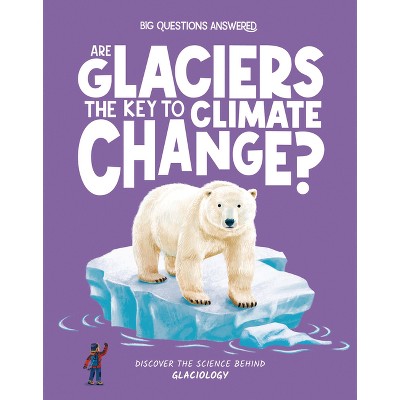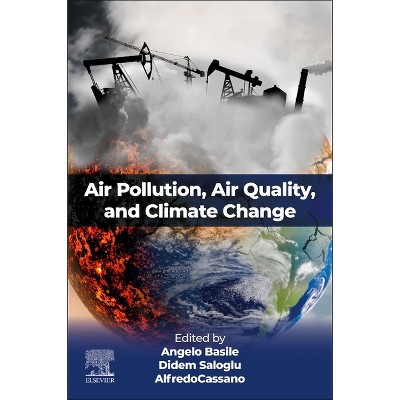Sponsored

The Effect of Multinational Enterprises on Climate Change - by Victor Steenbergen & Abhishek Saurav (Paperback)
$40.49Save $3.46 (8% off)
In Stock
Eligible for registries and wish lists
Sponsored
About this item
Highlights
- Multinational enterprises (MNEs) provide both a fundamental risk to and an opportunity for climate change mitigation.
- About the Author: The World Bank came into formal existence in 1945 following the international ratification of the Bretton Woods agreements.
- 140 Pages
- Business + Money Management, Environmental Economics
Description
About the Book
This report studies the effect of multi national enterprises on climate change. Multi national enterprises provide both a fundamental risk and an opportunity for climate change mitigation. The report reviews the latest available data, conducts new empirical analysis, and summarizes pioneering literature.Book Synopsis
Multinational enterprises (MNEs) provide both a fundamental risk to and an opportunity for climate change mitigation. The climate ambitions of MNEs will affect the environmental performance of countries around the world. As a leading actor, proactive MNEs can impose sustainability standards or encourage green technology transfers that, in some cases, could affect millions of producers and accelerate the climate transition. However, obstructive MNEs may equally hold back any progress to reduce a country's emissions via inaction or by actively resisting, obstructing, or lobbying against change. The objective of this report is to study the effect of MNEs on climate change. Toward this goal, the report reviews the latest available data, conducts new empirical analysis, and summarizes pioneering literature. The report answers four key questions related to the relationship between MNEs and climate change: 1) What effect do MNEs currently have on climate change, both through their own activities and through the emissions of their broader supply chains?; 2) How do MNEs shape the potential transfer of green technologies to domestic firms, and how do different types of interactions with MNEs stimulate such technology transfers?; 3) How committed are leading MNEs currently to transitioning their supply chains to net-zero emissions by 2050, and do they have long-, medium-, and short-range strategies to realize this?; 4) What types of policies can influence MNEs' effects on climate change?About the Author
The World Bank came into formal existence in 1945 following the international ratification of the Bretton Woods agreements. It is a vital source of financial and technical assistance to developing countries around the world. The organization's activities are focused on education, health, agriculture and rural development, environmental protection, establishing and enforcing regulations, infrastructure development, governance and legal institutions development. The World Bank is made up of two unique development institutions owned by its 185 Member Countries. The International Bank for Reconstruction and Development (IBRD) focuses on middle income and creditworthy poor countries and the International Development Association (IDA), which focuses on the poorest countries in the world.Dimensions (Overall): 10.0 Inches (H) x 7.0 Inches (W) x .36 Inches (D)
Weight: .77 Pounds
Suggested Age: 22 Years and Up
Number of Pages: 140
Genre: Business + Money Management
Sub-Genre: Environmental Economics
Publisher: World Bank Publications
Format: Paperback
Author: Victor Steenbergen & Abhishek Saurav
Language: English
Street Date: August 7, 2023
TCIN: 1004205095
UPC: 9781464819940
Item Number (DPCI): 247-35-3302
Origin: Made in the USA or Imported
If the item details aren’t accurate or complete, we want to know about it.
Shipping details
Estimated ship dimensions: 0.36 inches length x 7 inches width x 10 inches height
Estimated ship weight: 0.77 pounds
We regret that this item cannot be shipped to PO Boxes.
This item cannot be shipped to the following locations: American Samoa (see also separate entry under AS), Guam (see also separate entry under GU), Northern Mariana Islands, Puerto Rico (see also separate entry under PR), United States Minor Outlying Islands, Virgin Islands, U.S., APO/FPO
Return details
This item can be returned to any Target store or Target.com.
This item must be returned within 90 days of the date it was purchased in store, shipped, delivered by a Shipt shopper, or made ready for pickup.
See the return policy for complete information.
Frequently bought together
Trending Non-Fiction

$19.31
was $20.98 New lower price
4 out of 5 stars with 65 ratings

$18.28
was $19.58 New lower price
4.7 out of 5 stars with 17 ratings

$4.59
MSRP $7.99
Buy 2, get 1 free select books
4.8 out of 5 stars with 123 ratings

$6.20
MSRP $10.95
Buy 2, get 1 free select books
4.8 out of 5 stars with 33 ratings

$7.09
MSRP $9.99
Buy 2, get 1 free select books
4.9 out of 5 stars with 46 ratings











